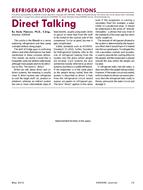Passive systems of different types have been installed as part of the HUD Solar Residential Demonstration
Program. Some of these have been instrumented, and measurements made. These were first made by the IBM instrumentation group, and are now being made by Vitro Laboratories. The purpose of these measurements is to find out the quantitative performance of the passive solar system and its dependence on different factors. These results can be used for improving the design of passive solar houses, provided the performance results can be correctly predicted from the design and operation of the passive solar system.
A fair amount of work has been done on modeling passive systems and calculating their performance. However, comparison with measurements has been done mainly for test cells. To make the models a useful tool for passive solar houses, it is necessary to extend this work to complete passive solar houses, and see how well their measured performance can be explained by simple models. The data obtained from the measurements on instrumented passive solar systems in the HUD Solar Program now give us an opportunity to do this. In this paper, we examine the results of measurements on three types of instrumented passive solar houses in the HUD solar program: 1) A Direct Gain passive solar house; 2) A house with a combination of a Direct Gain system and a mass wall: and 3) A house with a combination of a Sunspace and a Direct Gain system. The three passive solar houses are also in different climatic regions.
To examine what can be learned .from the measured results, we analyze these passive systems using simplified methods, and compare the calculated performance with the measurements. Reasons for any disagreement are discussed. Finally, other measurements are suggested, to help give a more complete understanding of these systems.
Citation: Symposium, ASHRAE Transactions, Volume 87, Part 2, Cincinnati, Ohio
Product Details
- Published:
- 1981
- Number of Pages:
- 19
- File Size:
- 1 file , 2 MB
- Product Code(s):
- D-CI-81-04-4

